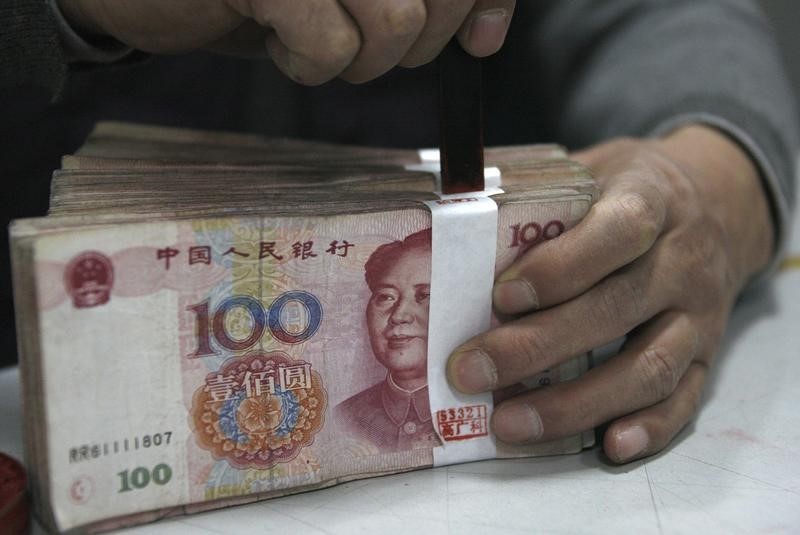(Deletes outdated sentence on the Aussie that was four paragraphs from the end)
* China sharply devalues currency, yuan sinks to 3-year low
* China's c.bank changes the way it sets yuan midpoint
* Aussie hit by China move, U.S. dollar rebounds vs euro
By Shinichi Saoshiro
TOKYO, Aug 11 (Reuters) - The Chinese yuan sharply weakened to a three-year low on Tuesday after the country's central bank surprisingly devalued it, dragging down the Australian dollar and adding a potential element of volatility to the region's foreign exchange markets.
In an attempt to make the country's exports more competitive and prop up the economy after recent poor data, China's central bank devalued the yuan by nearly 2 percent on Tuesday.
The yuan midpoint was set at 6.2298 per dollar, compared with the 6.1162 mid-point on Monday, with the central bank to now base the yuan's midpoint on market makers' quotes and the previous day's closing price. Spot yuan plunged roughly 2 percent to as low as 6.3360, weakest since September 2012.
"The yuan had become relatively expensive as other Asian currencies weakened against the dollar. With fears of an economic slowdown mounting, devaluating the yuan was the only thing China had not tried after implementing monetary, fiscal and equity-boosting policies," said Masafumi Yamamoto, senior strategist at Monex in Tokyo.
"Devaluation of the yuan likely won't end here. Currencies like the Singapore dollar, South Korean won and Taiwan dollar, which stand to compete with China, are falling, and today's move could generate headlines heralding the start of a devaluation war," he said.
The Chinese central bank currently allows the yuan to move 2 percent on either side of its fixed mid-point.
"I'd say it's a welcome, rather overdue move towards a market-determined exchange rate. It surely marks the end of the presumed SDR-driven stability and highlights that the July export numbers were just too weak to ignore," said Sean Callow, senior currency strategist at Westpac in Sydney.
The Australian dollar lost 1 percent to $0.7338 AUD=D4 , giving up earlier gains made on a rebound in commodity prices. The Aussie is often used as a liquid proxy of China trades.
As the U.S. dollar gained amid the yuan's slide, the euro was also nudged lower although it drew underlying support on optimism towards Greece sealing a multi billion-euro bailout deal with its lenders.
The euro was down 0.4 percent at $1.0977 EUR= after touching a 10-day high of $1.1041 EUR= overnight.
"Prospects of this specific Greek bailout deal going through are supporting the euro. But these are developments taking place after Greece and its lenders reached a broad agreement last month, and dollar-side factors are likely to determine the direction of the pair in the longer run," said Shinichiro Kadota, chief Japan FX strategist at Barclays (LONDON:BARC) in Tokyo.
Athens and its international creditors could reach a bailout accord by Tuesday and keep the heavily-indebted country solvent. ID:nL5N10K0MM
The dollar index .DXY rose 0.3 percent to 97.451 to almost pare overnight losses.
The Canadian dollar fell 0.6 percent to C$1.3077 against the US dollar after gaining 1 percent overnight on a bounce in oil prices.
Oil prices, which have heavily influenced commodity currencies like the Canadian dollar, resumed their fall on Tuesday. A weaker Chinese currency may support the country's exports but it is also seen weakening its ability to import commodities like oil.
The dollar was steady at 124.715 yen JPY= after being nudged off a high of 124.785 overnight.
